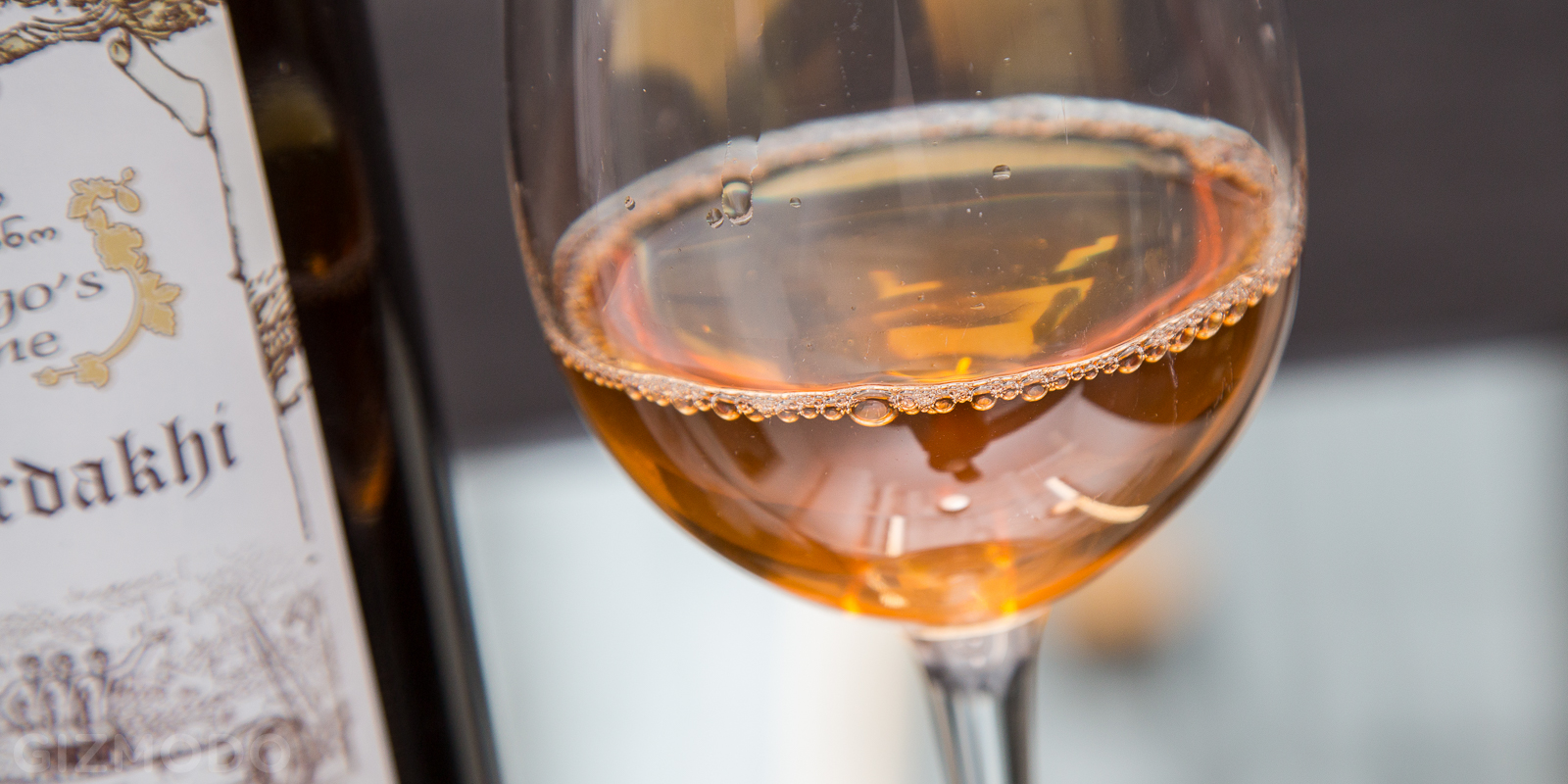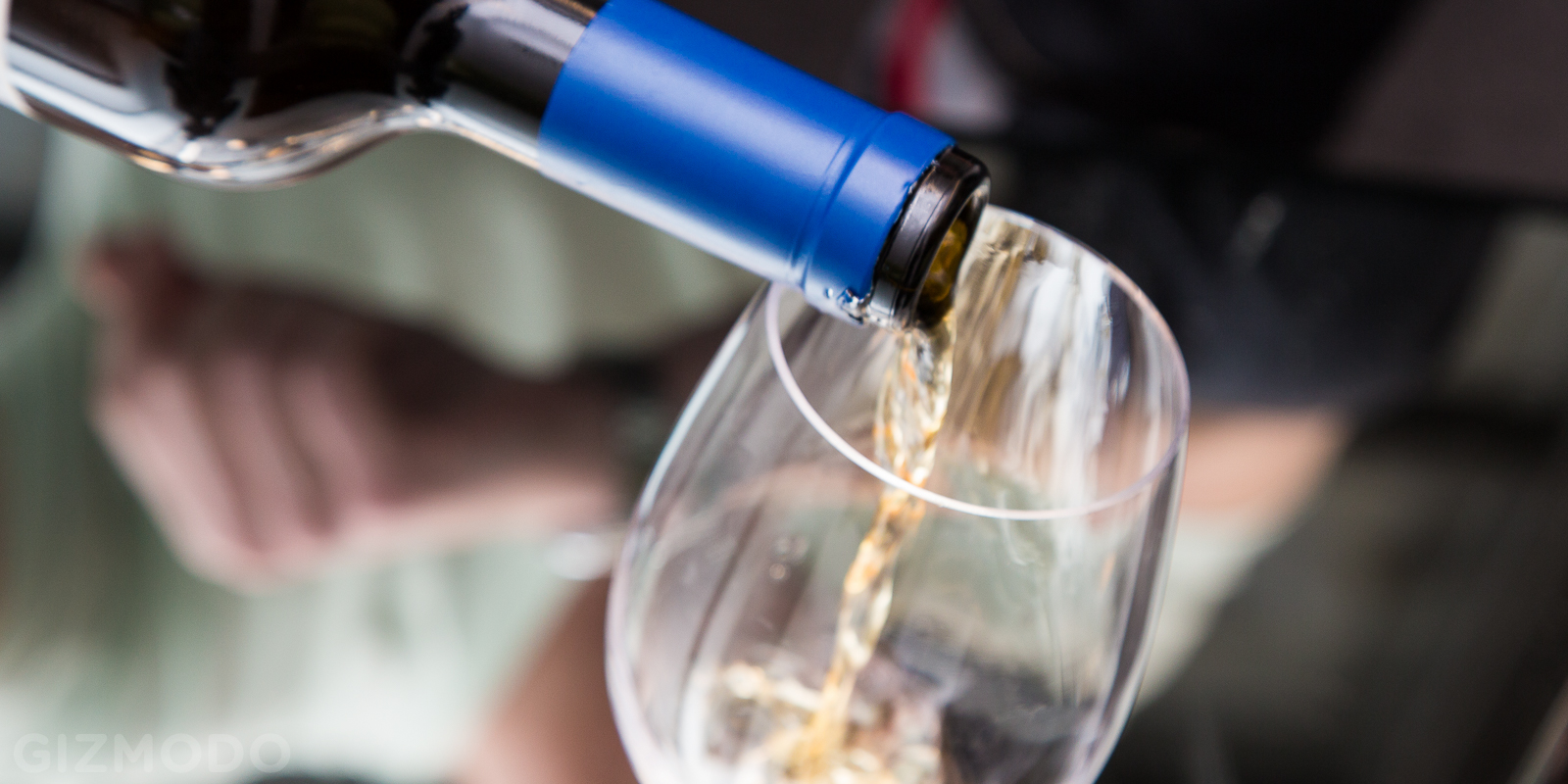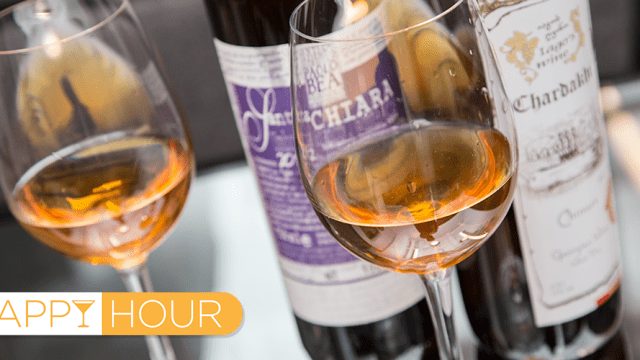“What is it?” the innocent wine drinker asks as she stares at a glass of golden grape nectar. It smells like a light red wine, but it looks like a dark white wine. It tastes like nothing you’ve had before. It is orange wine, and it is delicious.
The more you learn about orange wine, though, the more questions you’ll have. Who drinks it? What makes it different? When was it first bottled? Where is it made? And seriously: why is it orange?
It’s not all that complicated, actually. In fact, the story of orange wine informs the history of winemaking in general. Orange wine is also making a bit of a comeback — and for good reason.
The Background
Orange wine combines the ingredients of white wine with the process of red wine. Simply put, the vintner crushes white grapes and then lets the juice chill out with the skins on for a period of time. (The skins are immediately removed when making white wine.) Leaving the skins on gives the wine that golden hue as well as tannins and complexity normally found only in red wines.
This is actually how wine was made thousands of years ago in the Caucasus mountains. While methods evolved elsewhere in the world, people in present-day Georgia never stopped making wine with the skins on. We can also thank the people of Georgia for helping jumpstart the resurgence of orange wine’s popularity.

Celebrated Italian winemaker Friulian Josko Gravner drew inspiration from Georgia in the 1990s. After visiting some California vineyards, Gravner lost faith in modern winemaking techniques and the increasingly common use of chemicals in the winemaking process. So he started making wine the Georgian way. Because the method requires leaving the skins on, no chemicals can be sprayed on the grapes when they’re growing, and Gravner also eschews the use of chemicals during fermentation and bottling.
Many people say Gravner deserves sole credit for sparking the global craze for orange wine. In fact, you can still buy a bottle of his legendary Riserva if you’re lucky enough to find it. Otherwise, keep your eyes peeled for orange wines from Georgia as well as Italy and Slovenia. As more vineyards get on board, you’ll find orange wines made anywhere from California to Australia.
The Taste
Invariably, the unique flavour of orange wine will surprise you. It doesn’t taste like white wine, and it doesn’t taste quite like red. And it definitely doesn’t taste like oranges.
It’s no surprise, then, that some in the wine community prefer to call orange wine “amber wine.” In fact, amber is a better word to describe the actual colour of the wine. You’ll notice that colour with the first pour. I hate to admit it, but it kind of looks like pee. Well, pee after a night of heavy drinking.

The aroma’s next. Orange wine does smell a bit like red wine but with a little less of an edge. You can smell the dryness, but it’s not quite astringent. You’ll also get some of the fruity notes that you might expect from a rosé, another type of skin contact wine.
Now about that flavour. Los Angeles-based wine guru Lou Amdur described it best in a recent conversation. “It tastes like when you’re a kid and get a little illicit sip of booze from your aunt’s glass: ‘Wow that burns but I kind of like it.’” Lou told me. “It tastes like a watered-down bourbon.”

I’m not quite sure I get the watered-down detail, but there’s definitely something revelatory about that first taste. You’ll expect the wine to be sweet, but instead, you’ll get socked by the dryness. Depending on how it was made, you might also get some smoky flavours.
“The longer the skin sits on the grape, you start to get these smoky flavours which is really weird,” explains Lou. “Usually with smokiness I associated it with toasted barrels or some wines from volcanic soils.” But with an orange wine, it’s just part of the fun.
The Challenge
Here’s the rub. Orange wine is not easy to find. It took me several tries before I ended up at Flatiron Wines in Manhattan. (Lou told me to go there.) They recommended an Italian skin contact wine from Paolo Bea Santa Chiara for $55.60 and a Chardakhi from Iago’s Winey in Georgia. The latter sells for about $23.60 and was the favourite of the two at a recent tasting in the Gawker offices.
Time will tell if orange wine remains as something more than a passing craze. However, Lou said it best when I asked him about the apparent trendiness.
“How can this possibly been a trend?” Lou told me. “We’ve been doing it for about 10,000 years. It’s not really a trend and if it were so what? That’s how wine remains relevant and a living thing to us is playing around with it. We’ve been doing it for about 10,000 years. We’ve only been making bread for about 5,000 years.”
Lou’s right about another thing, too. Drinking orange wine does feel like tasting wine for the first time.

It’s time for Happy Hour, Gizmodo’s weekly booze column. A cocktail shaker full of innovation, science and alcohol.
